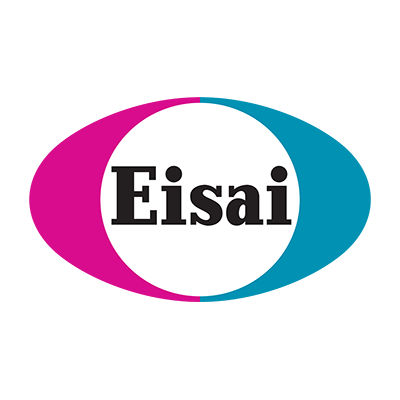预约演示
更新于:2025-08-29
Bracco Imaging Italia Srl
更新于:2025-08-29
概览
标签
其他疾病
造影剂
小分子化药
疾病领域得分
一眼洞穿机构专注的疾病领域
暂无数据
技术平台
公司药物应用最多的技术
暂无数据
靶点
公司最常开发的靶点
暂无数据
| 排名前五的药物类型 | 数量 |
|---|---|
| 造影剂 | 1 |
| 小分子化药 | 1 |
关联
1
项与 Bracco Imaging Italia Srl 相关的药物靶点- |
作用机制 磁共振成像增强剂 |
在研机构 |
非在研适应症- |
最高研发阶段批准上市 |
首次获批国家/地区 美国 |
首次获批日期1992-11-16 |
100 项与 Bracco Imaging Italia Srl 相关的临床结果
登录后查看更多信息
0 项与 Bracco Imaging Italia Srl 相关的专利(医药)
登录后查看更多信息
1
项与 Bracco Imaging Italia Srl 相关的文献(医药)PloS one3区 · 综合性期刊
1H-NMR and MALDI-TOF MS as metabolomic quality control tests to classify platelet derived medium additives for GMP compliant cell expansion procedures
3区 · 综合性期刊
ArticleOA
作者: Acquadro, Elena ; Viale, Alessandra ; Corpillo, Davide ; Battiston, Monica ; Biondi, Luca ; Ruzza, Marta ; Agostini, Francesco ; Mazzucato, Mario ; Serra, Fabrizio ; Aime, Silvio ; Canepa, Barbara
INTRODUCTION:
Ex vivo cell expansion under Good Manufacturing Practice (GMP) guidelines can be performed using medium additives containing human growth factors from platelets. These products can differently affect proliferation of adipose mesenchymal stromal stem cells (ASC). Qualification of medium additive performance is required for validation under GMP regulations: assessment of growth factor concentrations is not sufficient to predict the biological activity of the product batch. Proton nuclear magnetic resonance spectrometry (1H-NMR) and matrix-assisted laser desorption/ionization time of flight mass spectroscopy (MALDI-TOF MS) provide wide molecular characterization of samples.
AIMS:
We aimed to assess if 1H-NMR and MALDI-TOF MS techniques can be used as quality control test potentially predicting the impact of a medium additive on cell proliferation.
METHODS:
We tested the impact on ASC growth rate (cell proliferation assessment and cell morphology analysis) of four medium additives, obtained by different methods from human platelet apheresis product. In order to classify each medium additive, we evaluated growth factor concentrations and spectra obtained by 1H-NMR and by MALDI-TOF MS.
RESULTS:
Medium additive obtained by CaCl2 activation of platelet rich products induced higher proliferation rate vs additive derived from platelet depleted ones. Additives obtained by freeze-and-thaw methods weakly induced ASC proliferation. As expected, principal component analysis of growth factor concentrations did not unravel specific biochemical features characterizing medium additives in relation with their biological activity. Otherwise, while 1H-NMR showed a partial resolution capacity, analysis of MALDI-TOF MS spectra allowed unambiguous distinction between the medium additives we used to differently stimulate cell growth in vitro.
DISCUSSION:
MALDI-TOF and, despite limitations, 1H-NMR are promising cost effective and reliable quality controls to classify the potential of a medium additive to promote ASC growth. This can represent, after further investigations and appropriate validation, a significant advantage for GMP compliant manufacturing of advanced cell therapy products.
2
项与 Bracco Imaging Italia Srl 相关的新闻(医药)2024-05-14
·动脉网
过往十年时间,超千亿资金注入医疗人工智能。医学影像、药物研发、机器人等细分领域都在滋养之中迅速成长,构成人工智能的技术也由机器学习向深度学习、生成式AI等形式不断扩散,成为媲美互联网的又一力量。然而,逾千家企业入局背后,鲜有参与者能在维持高强度研发的同时取得同等体量的收入。直至近两年才有头部企业实现规模营收,走到创造利润的边缘。斯坦福出身的深智透医(英文商号Subtle Medical Inc)在这场商业化的角逐中率先突出重围。这家致力于以AI驱动医学影像服务的头部创新公司,其全球订单已突破亿级。此外,深智透医在刚结束的“2024 未来医疗100强”评选中,凭借最前沿的技术和独有的创新能力,入选“中国医疗健康产业链服务榜”。借助生成式AI驱动的智能影像增强系列产品,深智透医已在中美欧等多个市场完成布局,销售额实现连续三年翻倍增长。深智透医入选“未来医疗100强·中国医疗健康产业链服务榜”能在复杂的医疗体系中凭借AI率先实现盈利,深智透医到底做对了什么?8篇研究结果获顶级学会ISMRM收录,深透智医靠理解与创新实现规模落地与其他AI企业的布局逻辑有所不同,深智透医的产线虽属于影像AI这个赛道,但它在创立之时便放弃了众多企业选择的辅助诊断这一路径,而是另辟蹊径,从源头开始,选择了AI的影像增强。因此,深智透医的AI不是为了替代医生,而是通过AI为医生赋能,提供更多更高质量的影像数据。全球绝大部分的磁共振、PEC/CT 都处于满负荷运行状态,患者预约磁共振往往需要至少一周时间,在有些大医院甚至长达一个月。因此,医院存在检查提速的需求,毕竟若能将过去10—20分钟的检查时间缩短至数分钟,医院能够接受更多患者,患者将能获得更及时的检查,及早开始治疗。从上述需求出发,深智透医基于人工智能技术打造了SupPET™和SupMR™两款影像增强AI(全球化部署产品为SubtlePET™及SubtleMR™)。其中,SupPET™作用于PET(正电子发射断层扫描),能对PET的成像加速4-10倍,仍能提供同等质量的医学图像;SupMR™服务于MR,可以将成像时间缩短至过去的一半不到,且保证图像质量达到精准诊断需求。需要注意的是,在进行影像增强的过程中,深智透医的AI解决方案不会改变现有医生任何工作流,因而在推广过程中没有遇到太多阻碍,快速实现规模落地。完成初步用户积累之后,深智透医由单一产品路径分化为横纵双向并行。面向医疗机构这一用户群体,深智透医逐步将CT、SPECT、X光等影像纳入产品矩阵,逐步覆盖AI+医学影像全域。纵向方面,深智透医围绕医院、药企需求深入临床场景,在手术之中实现实时影像增强,在核医学显影流程中缩减显影步骤及核药用量。以磁共振检查这一场景为例,深智透医已经开发了一系列端到端的解决方案,包含多款产品,优化临床扫描工作流、效率、质控,以及实现更多缺失序列补全、更高质量的造影剂应用。深智透医产品矩阵为了保证上述落地的AI产品维持健康的生命力,深智透医从未停止迭代与创新。2017年起,深智透医获近30项国内外专利,并多次在Nature Digital Medicine,Radiology等顶级期刊发表20余篇论文,展示多项多中心临床验证结果。在近日5月4—9日新加坡举办的第32届国际磁共振大会(ISMRM)上,深智透医最新的八篇关于MRI科研成果在大会上以报告的形式展示。深智透医的研究成果被国际顶级学会ISMRM选中,是国际专家学者对深智透医的科研视角和成果的认可,也是对深智透医产品临床价值的肯定。拜耳、礼来青睐,生成式AI助力诊断药物研发对于医疗人工智能等新兴技术而言,规模化落地不仅需要技术本身具备充分的优效性,还需要企业充分理解用户需求,将技术置于恰当的应用场景。深智透医深谙此道。在医疗机构端,深智透医主推SupPET™和SupMR™两款影像增强AI及质控、流程分析平台SupQC,前者主打为用户缩减成像时间,提升医疗机构服务能力上限;后者则可提升用户诊断质量,避免医生在繁忙的工作中出现误诊漏诊。而在交付方式,深智透医同样因地制宜进行了调整。据深智透医创始人及CEO宫恩浩表示,企业与斯坦福、UCSF、MD安德森肿瘤医院、RadNet、梅奥医学中心、西奈山医院等美国医疗院校、医院及第三方影像中心达成了合作,这些机构偏好于灵活AI配置方式,因而深智透医为合作伙伴提供了按例付费、持续付费、集团订阅的SaaS业务模式。相比之下,在中国,深智透医积极响应国家提出的医学影像高质量发展和提供医疗影像新质生产力的号召,同时注重数据安全,通过招投标的形式买断软硬件设备进行本地化部署。目前,深智透医已与上海华山医院,上海长征医院,北京安贞医院、郑大一附院等知名大三甲医院,及美年大健康、一脉阳光、全景医疗等国内影像集团确立客户关系。面对各路医疗企业都想拿下的医药端和医学装备端,深智透医也在近两年借助生成式AI打开局面。在与拜耳医药的全球合作中,深智透医旗下SupGAD产品与拜耳合作研发新款磁共振影像药剂产品,当前已进入三期临床试验。深智透医的AI解决方案可以赋能造影剂药物效果,实现更安全、高效的增强MRI扫描,在优化优化低剂量的造影剂的同时,保证提供标准的医学影像用于诊断。宫恩浩告诉动脉网:“磁共振的造影剂含有一定量的重金属。通常而言,这些造影剂会通过肾脏处理后排出体外,但仍有部分重金属会留在患者体内,并在脑部等脏器中沉积。因此, 通过与这类药企合作,我们希望通过AI的赋能减少造影剂的用量,提升诊断精度,并可有效扩大造影剂增强类的影像检查受众群体,有利于更早更全面地发现病情、做出诊断。”更具潜力的合作在于核药方面。2022年以来,新入局者、新靶点、新核素的出现,让核药成为创新药低迷市场中的一股暖流。此赛道中,深智透医已与拜耳医药、礼来旗下影像药剂核药厂商Avid(礼来旗下)、Telix及国内外多个核药厂商开展合作,持续开展更多药剂角度的应用,并通过其多模态的AI平台和产品线,更高效地得到更高质量的影像数据、生物标记特征等信息。再谈医学装备端,早在2021年,深智透医就与西门子达成协议,通过前装MRI机器,做到AI赋能影像设备。去年底西门子医疗也与深智透医再次官宣加速深度合作,在最新的MR磁共振设备及高端的PET/MR设备上与深智透医再度合作,引入AI增强功能,进一步提升扫描质量与效率。去年9月,深智透医又与全球影像诊断药剂龙头企业Bracco Imaging(博莱科影像)签署合作协议,共同探索AI在MRI领域的应用,提升增强MRI的医学影像精确度、诊断效果及病患体验。 深智透医的商业化逻辑获FDA、CE、NMPA三重认证,深智透医在全球市场生根自2017年创立后,深智透医先后获得斯坦福大学独家授权相关技术知识产权,以及来自UCSF、MD安德森肿瘤医院等全球顶级医院的合作,其旗舰产品 SupPET™、SupMR™是全球最早获美国FDA、欧盟CE(MDR)、中国NMPA三大认证的AI医学影像产品之一。借助这些优势,深智透医已将市场扩展到欧洲、亚洲、南美洲、加拿大、澳大利亚等地区,其多项AI产品在全球600余家医院和影像中心临床使用,年服务患者人数超过200万人,已是全球市场首屈一指的AI服务商。近日,深智透医新获得了B+轮近千万美金融资,用于全球商业落地及产品研发创新的再度加速。未来,我们或能透过深智透医见证生成式AI在医疗领域的成长之路——通过处理更多医学数据模态,更高效地优化工作流,进而赋能上下游及更多医药场景,创造更多智能化应用,最终让更多患者受益。*封面图片来源:123rf近期推荐声明:动脉网所刊载内容之知识产权为动脉网及相关权利人专属所有或持有。未经许可,禁止进行转载、摘编、复制及建立镜像等任何使用。动脉网,未来医疗服务平台
2023-09-28
·美通社
米兰
2023年9月28日
/美通社/ --
"
解
锁人工智能革命
——
人工智能
时代医疗保健行业和诊断成像的未来研讨会
"
的标题描述了2023年"博莱科创新日"的主题。 此次活动在米兰的人类科技馆礼堂举行。
Diana Bracco, President and CEO of Bracco Group
博莱科影像(Bracco Imaging)副总裁兼首席执行官
Fulvio Renoldi Bracco
在会议开始时发表讲话,他在讲话中表示:"人工智能正在对我们的生活产生重大影响,该技术在诊断成像中的应用将极大地造福于患者和医疗保健提供者。 因此,我们很早就建立了一支专门的人工智能团队,与著名大学、医院和私营公司合作,旨在开发能够提高造影剂诊断性能的算法和智能解决方案,从而使成像越来越准确,越来越具有预测性。"
研讨会包括三次会议,由重要的国际主旨发言人主讲,最后由大学和研究部长
Anna Maria Bernini
作最后发言。 第一场会议探讨了人工智能在药物发现、组学科学和制药方面的新能力,强调了人工智能注定会在医学和医疗保健行业的诸多方面发挥重要作用。 具体而言,人工智能将:加快针对特定靶点的新型工程药物的开发速度,促进用于预防和治疗人类疾病的大量组学数据的研究和管理,并简化生产部门,以最大限度地提高产量,最大限度地减少环境影响。
第二场会议专门讨论了人工智能在放射学中的影响,讨论了在诊断成像中采用人工智能的重要主题。
最后一场会议讨论了面对人工智能革命,国家和国际机构目前正在解决的众多伦理、政治和监管方面的问题。
博莱科集团(Bracco Group)总裁兼首席执行官
Diana Bracco
主持了最后一场会议的开幕式,她谈到了诊断成像对患者健康日益增长的重要性,而博莱科在这一领域处于全球领先地位。 她说道:"成像技术作为当代医学的支柱,以及确定病理和开发创新医疗方法的重要工具,其地位正在得到不断巩固。 事实上,人们普遍认为,早期诊断不仅可以实现个性化和靶向治疗,还有助于在疾病的初始阶段就加以解决。 由于其非侵入性和对患者的风险最小,精确成像将越来越多地成为未来医学的中心,诊断和治疗将更加紧密地结合在一起。"
Diana Bracco
随后重点讲述了人工智能革命在诊断成像方面的潜力: "人工智能将协助我们的放射科医生工作,帮助他们出具越来越精确和可靠的诊断报告。"
除了众多参观者外,博莱科创新日还邀请了来自意大利、瑞士、德国、英国、美国和中国的博莱科科研机构的研究人员参加。 在"放射学中的人工智能"专题会议期间,一项重要研究的结果发表于著名期刊《
Investigative Radiology
》
:
https://journals-lww-com.libproxy1.nus.edu.sg/investigativeradiology/fulltext/9900/amplifying_the_effects_of_contrast_agents_on.129.aspx
。 这项研究由Alberto Fringuello Mingo、Sonia Colombo Serra和Giovanni Valbusa等三位来自博莱科成像的年轻研究人员撰写。 通过运用人工智能,该团队以创新方法成功地"训练"了一个神经网络,以增强大脑磁共振成像的对比度,而所有这些都不会对目前的临床方案产生任何影响。
Carolina Joyce Elefante
Ufficio Stampa Direzione Comunicazione & Immagine Gruppo Bracco
carolina.elefante@bracco.
com
+393334263484
www.bracco.com
放射疗法并购
100 项与 Bracco Imaging Italia Srl 相关的药物交易
登录后查看更多信息
100 项与 Bracco Imaging Italia Srl 相关的转化医学
登录后查看更多信息
组织架构
使用我们的机构树数据加速您的研究。
登录
或

管线布局
2025年09月09日管线快照
管线布局中药物为当前组织机构及其子机构作为药物机构进行统计,早期临床1期并入临床1期,临床1/2期并入临床2期,临床2/3期并入临床3期
批准上市
1
登录后查看更多信息
药物交易
使用我们的药物交易数据加速您的研究。
登录
或

转化医学
使用我们的转化医学数据加速您的研究。
登录
或

营收
使用 Synapse 探索超过 36 万个组织的财务状况。
登录
或

科研基金(NIH)
访问超过 200 万项资助和基金信息,以提升您的研究之旅。
登录
或

投资
深入了解从初创企业到成熟企业的最新公司投资动态。
登录
或

融资
发掘融资趋势以验证和推进您的投资机会。
登录
或

Eureka LS:
全新生物医药AI Agent 覆盖科研全链路,让突破性发现快人一步
立即开始免费试用!
智慧芽新药情报库是智慧芽专为生命科学人士构建的基于AI的创新药情报平台,助您全方位提升您的研发与决策效率。
立即开始数据试用!
智慧芽新药库数据也通过智慧芽数据服务平台,以API或者数据包形式对外开放,助您更加充分利用智慧芽新药情报信息。
生物序列数据库
生物药研发创新
免费使用
化学结构数据库
小分子化药研发创新
免费使用
